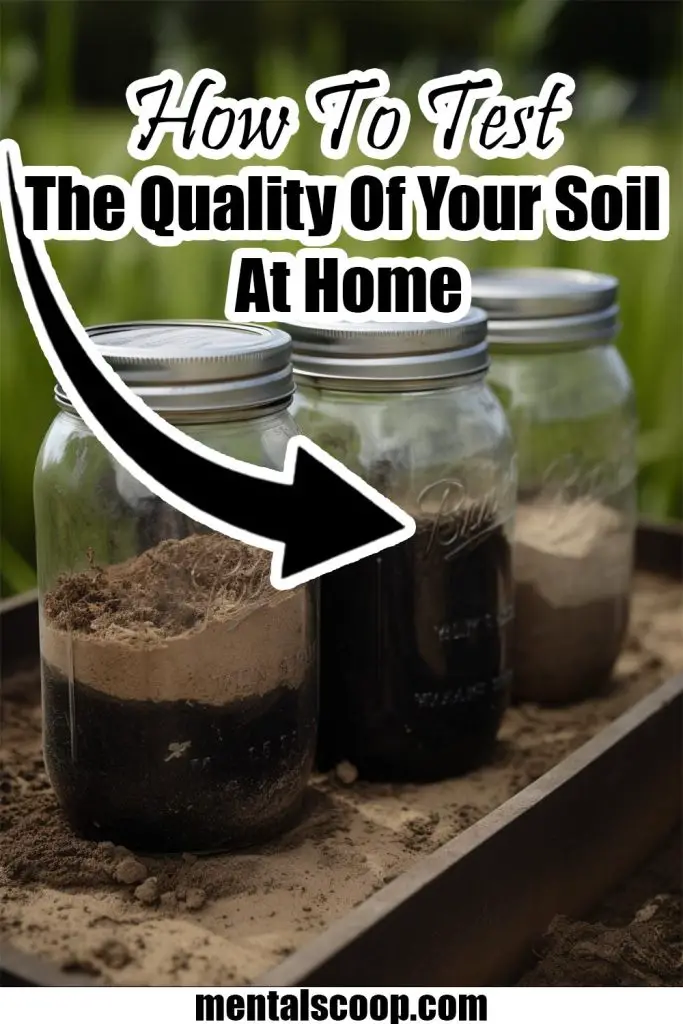How To Test The Quality Of Your Soil At Home

Having healthy soil is vital for successful gardening and plant growth. Understanding the quality of your soil is the first step towards providing the necessary nutrients and amendments to ensure optimal plant health. While professional soil testing is available, you can also test the quality of your soil at home using simple methods.
In this article, we will guide you through various techniques that will help you assess your soil’s composition, pH level, and fertility. By testing your soil, you can make informed decisions on how to improve it and create the perfect environment for your plants to thrive.
Understanding Soil Composition
The composition of soil refers to its physical and chemical properties, including the proportions of sand, silt, and clay. Testing soil composition helps you determine its texture and structure, which play a crucial role in water drainage, aeration, and nutrient retention. Here’s how you can assess the composition of your soil:
a. Hand Texture Test: Take a handful of moist soil and squeeze it. If it feels gritty and falls apart easily, it contains a high proportion of sand. If it feels smooth and holds its shape but is slightly crumbly, it has a balanced composition. If it feels sticky and molds easily, it has a high clay content.
b. Jar Test: Collect a soil sample and place it in a clear jar. Add water and shake vigorously to suspend the particles. Over time, the soil particles will settle into layers. The bottom layer will be sand, followed by silt, and finally clay. By measuring the thickness of each layer, you can estimate the composition of your soil.
Determining Soil pH
Soil pH is a measure of its acidity or alkalinity. Different plants have specific pH requirements for optimal growth, so understanding your soil’s pH is crucial. Here’s how to test your soil’s pH at home:
a. pH Test Kit: pH test kits are readily available at gardening centers. Collect soil samples from different areas of your garden, mix them together, and follow the kit’s instructions to obtain a pH reading. A pH of 7 is neutral, below 7 is acidic, and above 7 is alkaline.
b. Homemade pH Test: Prepare a soil slurry by mixing equal parts soil and distilled water. Add a few drops of vinegar to a small sample and observe. If it fizzes, your soil is alkaline. Repeat the process with a small sample and baking soda. If it fizzes, your soil is acidic. However, this method provides a rough estimate and is not as accurate as a pH test kit.
Assessing Soil Fertility
Soil fertility determines its ability to support plant growth by providing essential nutrients. Here are some techniques to assess soil fertility at home:
a. Nutrient Deficiency Symptoms:
Observe your plants for signs of nutrient deficiencies, such as yellowing leaves, stunted growth, or poor fruit development. These symptoms can indicate specific nutrient imbalances in the soil.
b. Soil Nutrient Testing Kits:
Soil nutrient testing kits are available for home use. They provide information about the levels of major nutrients like nitrogen (N), phosphorus (P), and potassium (K) in your soil. Follow the instructions to collect a soil sample and interpret the results to address any deficiencies.
c. Organic Matter Test:
Organic matter is crucial for soil fertility and moisture retention. Take a sample of soil and remove any debris. Place the soil in a container and weigh it. Dry the soil in an oven and weigh it again. The difference in weight indicates the amount of organic matter present. Ideally, soil should contain 3-5% organic matter.
d. Earthworm Count:
Earthworms are indicators of soil health and fertility. Dig a small hole in your garden and count the number of earthworms you find. A healthy garden should have about 10-15 earthworms per square foot.
Overall
Testing the quality of your soil at home is a valuable process that helps you understand its composition, pH level, and fertility. Armed with this knowledge, you can take appropriate actions to improve the soil and create an optimal environment for your plants.
Remember, professional soil testing is also available if you require more precise results or further assistance. By investing time in testing your soil, you will be rewarded with a thriving garden and healthier, more productive plants. Happy gardening!

More amazing articles you may be interested in reading:

How To Remove A Tree Stump Painlessly
10 Vital Home Maintenance Tasks You’ll Regret If You Forget
See How Much Propane Is Left In A Tank With No Gauge
Thanks for reading and be sure to share this info with your friends using the social share buttons below.
Talking about social stuff, consider liking our Facebook page to keep up to date with our articles. Check out our other articles for more mental scoops!
